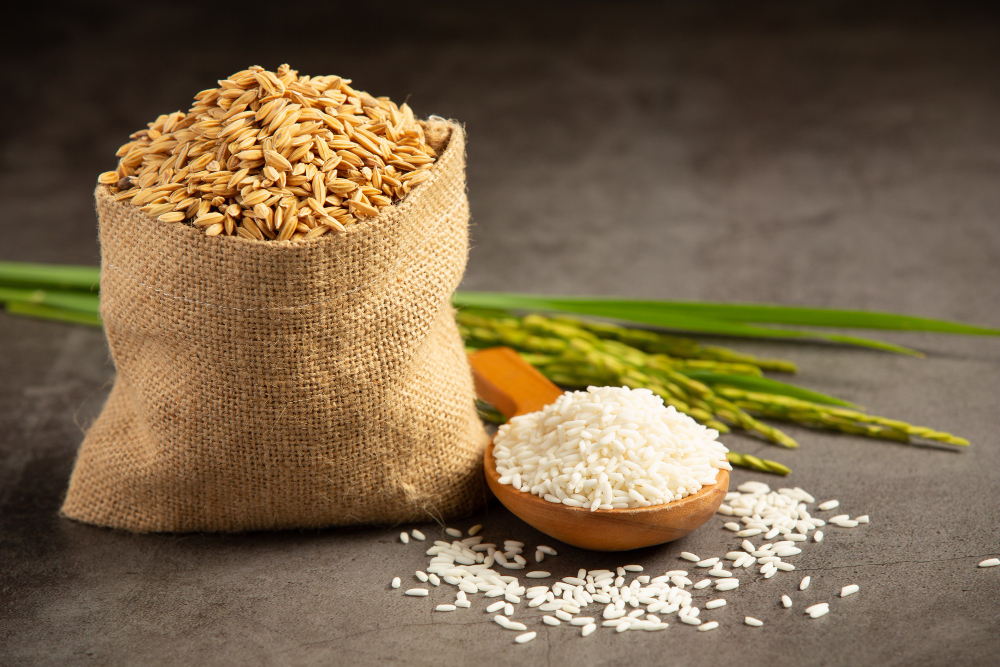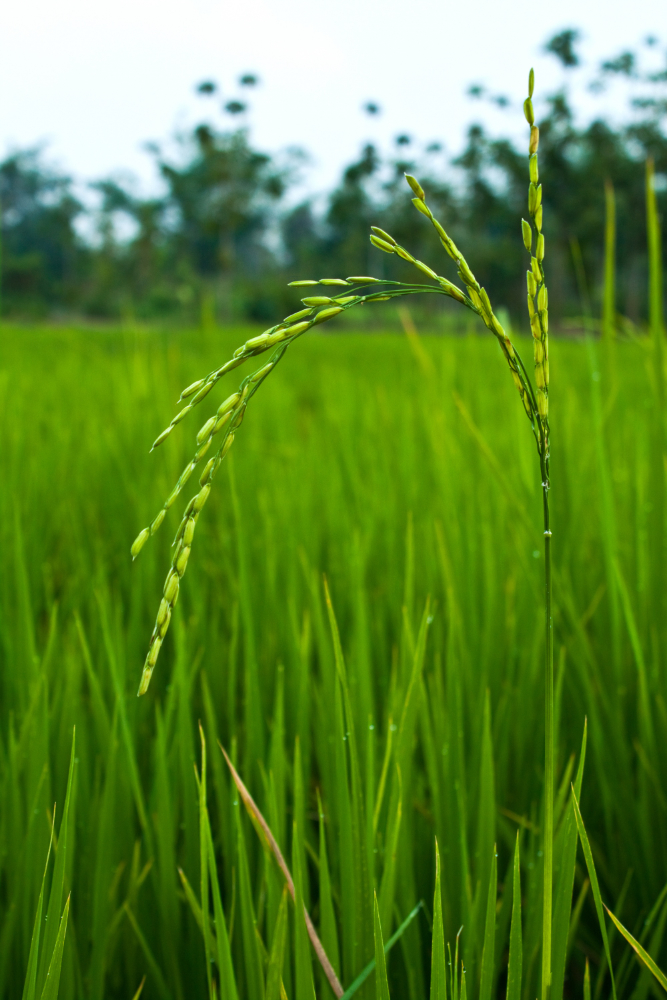Introduction
In the annals of Indian agriculture, the name Mankombu Sambasivan Swaminathan, often referred to as the “Father of the Green Revolution in India,” stands as a estament to a transformative era. His visionary work, which began in the 1960s, revolutionized Indian agriculture and made the country self-sufficient in food grains, particularly rice. However, recent events have thrown a spotlight on a concerning issue: a noticeable shortage of rice production in India, which has forced the nation to halt rice exports. This situation prompts us to ask a critical question: What factors have contributed to this sudden decline in rice production, and how does it relate to MS Swaminathan’s Green Revolution mission?

The Legacy of the Green Revolution
The Green Revolution, spearheaded by MS Swaminathan, marked a turning point in India’s agricultural history. Through the introduction of high-yielding crop varieties, improved irrigation systems, and enhanced farming practices, India transitioned from a food-deficit nation to one that could feed its growing population. This monumental achievement helped alleviate hunger and poverty, making agriculture a cornerstone of the Indian economy.
The Rice Paradox
India has traditionally been one of the world’s largest rice producers and consumers. With a plethora of schemes and campaigns aimed at improving crop productivity and supporting farmers, one might wonder how the nation finds itself facing a rice shortage. To unravel this paradox, several contributing factors must be examined.
- Climate Change and Unpredictable Weather Patterns: In recent years, India has experienced erratic weather patterns due to climate change. Unpredictable rainfall, prolonged droughts, and unseasonal weather events have adversely affected rice cultivation, leading to reduced yields.
- Water Scarcity: Water scarcity, exacerbated by over-extraction of groundwater and mismanagement of water resources, poses a significant challenge to rice cultivation. Paddy fields require copious amounts of water, and the depletion of aquifers has made it increasingly difficult for farmers to secure the necessary irrigation.
- Pest Infestations: Pest outbreaks, such as the infestation of brown planthoppers, have devastated rice crops. The overuse of pesticides and monoculture practices have also contributed to pest resistance, making rice farming more vulnerable.
- Land Degradation: Soil degradation, caused by unsustainable farming practices, including excessive use of chemical fertilizers and improper land management, has diminished the fertility of agricultural land, affecting rice yields.
- Market Dynamics: Market forces, such as fluctuations in rice prices, have influenced farmers’ decisions on crop selection. The economic viability of rice cultivation has led some farmers to switch to other cash crops, affecting overall rice production.
- Policy Challenges: Inconsistent government policies, including procurement prices and export restrictions, have added uncertainty to rice cultivation, deterring farmers from investing in this staple crop.

The Way Forward
While the recent rice shortage in India may challenge the legacy of the Green Revolution, it is essential to recognize that the world has changed significantly since the 1960s. Climate change, environmental degradation, and evolving market dynamics present new challenges that require innovative solutions.
To honor the pioneering work of MS Swaminathan, India must adopt a multifaceted approach:
- Climate-Resilient Agriculture: Promote climate-smart agriculture techniques that help farmers adapt to changing weather patterns and reduce vulnerability to climate-related risks.
- Sustainable Water Management: Invest in sustainable irrigation practices and promote water-efficient technologies to ensure the availability of water for rice cultivation.
- Biodiversity Conservation: Encourage crop diversification and the use of indigenous and resilient crop varieties to reduce vulnerability to pests and diseases.
- Soil Health Improvement: Implement soil health programs to rejuvenate degraded soils, making them more fertile and productive.
- Policy Coherence: Develop coherent and forward-thinking agricultural policies that provide farmers with stability and incentives for rice cultivation.
Technology can indeed play a pivotal role in addressing the challenges faced by India’s rice production and supporting the way forward. Here’s how technology can be harnessed to overcome the issues contributing to the rice shortage:
- Precision Agriculture and Data Analytics:
- Sensor Technology: Smart sensors can monitor soil moisture, nutrient levels, and weather conditions in real-time. Farmers can receive alerts and recommendations on when and how much to irrigate or fertilize, optimizing resource use.
- Big Data Analytics: By analyzing vast amounts of data, machine learning algorithms can provide insights into crop management, pest control, and yield prediction. This helps farmers make informed decisions.
- Climate-Resilient Crop Varieties:
- Genetic Engineering: Advanced biotechnology can be used to develop rice varieties that are more resilient to climate change, pests, and diseases. For instance, drought-tolerant and flood-resistant rice strains can help farmers adapt to extreme weather events.
- Water Management:
- Drip and Sprinkler Irrigation: Technology-enabled irrigation systems like drip and sprinkler systems optimize water use and reduce wastage.
- Remote Sensing: Satellite imagery and drones can assess soil moisture levels, helping farmers make data-driven irrigation decisions.
- Pest and Disease Management:
- Remote Monitoring: IoT devices and drones can monitor crops for signs of pests or diseases, allowing for early intervention.
- Precision Application: Automated machinery can precisely apply pesticides and herbicides only where needed, minimizing environmental impact.
- Soil Health Improvement:
- Soil Testing Kits: Portable soil testing kits can provide instant soil health assessments, enabling farmers to tailor fertilization strategies.
- Biofertilizers: Advanced biotechnology can develop biofertilizers that enhance soil fertility naturally.
- Market Access and Price Transparency:
- Mobile Apps: Apps and platforms can connect farmers directly to buyers, helping them get fair prices for their produce.
- Blockchain: Blockchain technology can be used to create transparent and secure supply chains, reducing middlemen and ensuring fair market access.
- Policy Implementation and Monitoring:
- GIS and Remote Sensing: Geographic Information Systems (GIS) and remote sensing technologies can be used to monitor land use and policy compliance, helping authorities enforce sustainable farming practices.
- Education and Extension Services:
- Online Learning: Technology can facilitate online agricultural education and training for farmers, providing access to the latest best practices and research.
- Mobile Advisory Services: SMS and voice-based services can deliver agricultural advice directly to farmers’ mobile phones.
- Market Intelligence:
- Market Data Platforms: Online platforms can provide farmers with market intelligence, including demand trends and price forecasts, enabling them to make informed planting decisions.
- Robotics and Automation:
- Robotic Farming: Autonomous robots can assist with tasks such as planting, weeding, and harvesting, reducing labor costs and increasing efficiency.
- Energy Efficiency:
- Solar-Powered Solutions: Solar technology can provide off-grid energy solutions for rural areas, reducing energy costs for irrigation and processing.
- Traceability and Food Safety:
- QR Codes and RFID: These technologies can be used for product traceability and food safety assurance, enhancing consumer confidence in Indian rice products.
- Financial Inclusion:
- Digital Payments: Fintech solutions can provide farmers with access to financial services, including loans and insurance, which are essential for investment in technology adoption.

On the whole, technology can serve as a powerful enabler for addressing the challenges facing rice production in India. By integrating these technological advancements into agricultural practices and policies, India can not only overcome the current rice shortage but also build a more sustainable and resilient agricultural sector that honors the legacy of MS Swaminathan’s Green Revolution. Embracing these innovations will empower farmers, increase productivity, and ensure food security in an era marked by dynamic environmental and economic changes.
Conclusion
MS Swaminathan’s Green Revolution was a monumental achievement that helped India overcome food scarcity and hunger. However, as India faces a rice shortage in the present day, it is crucial to acknowledge the multifaceted challenges that have emerged since that time. Addressing these challenges will require innovative approaches, sustainable practices, and policy reforms that honor the legacy of the Green Revolution while adapting to the evolving needs of a changing world. Only by doing so can India continue to be a self-sufficient and prosperous nation in the realm of agriculture, in keeping with the vision of MS Swaminathan.
“In the vast and fertile landscape of agrotech, the future is ripe for innovation, and the possibilities are endless. As a tech startup founder, you hold the power to transform agriculture into a sustainable, efficient, and tech-driven sector. Seize this golden opportunity to sow the seeds of change, cultivate innovation, and harvest a future where technology and agriculture thrive together, ensuring food security and ecological balance for generations to come.”
